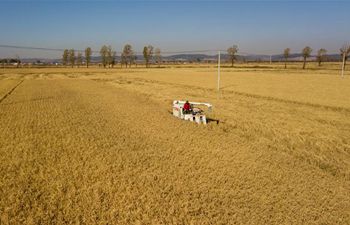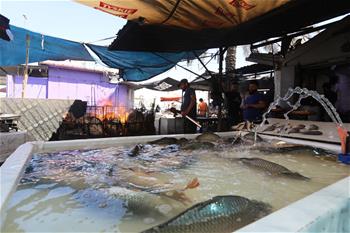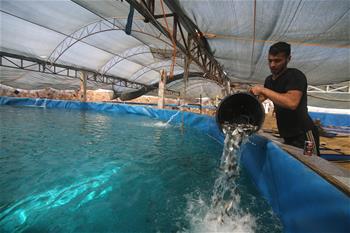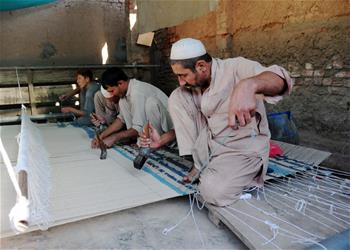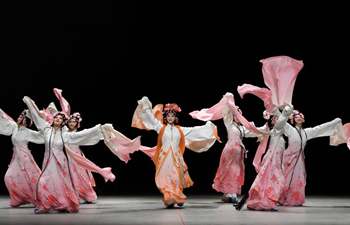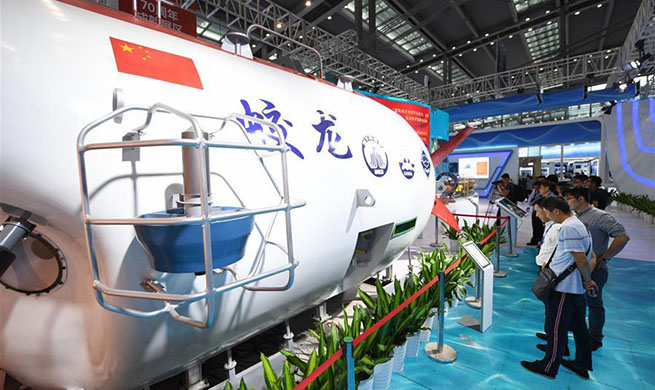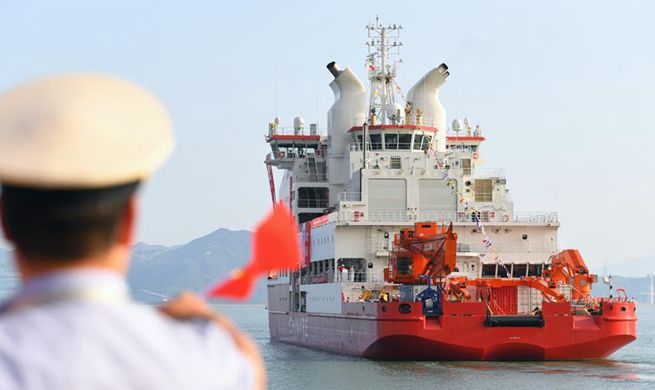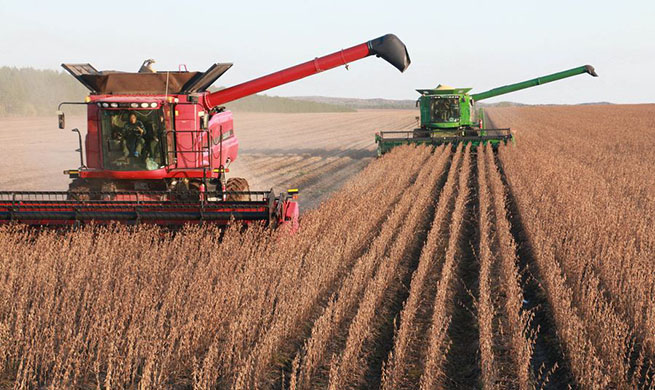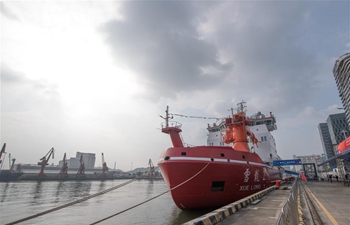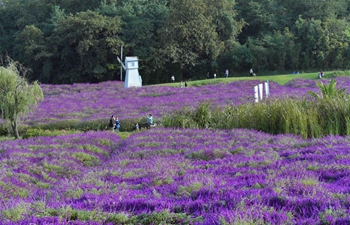NAIROBI, Oct. 16 (Xinhua) -- Ole Kuraru is a 96-year-old Kenyan herdsman whose fortunes have changed drastically thanks to the construction of a 1,600 cubic meter water storage tank by the Chinese contractor of Phase 2A of Standard Gauge Railway (SGR) linking Nairobi to the resort town of Naivasha.
The polygamous elder from the nomadic Maasai tribe that has won global acclaim for preserving its indigenous traditions, is no longer trekking long distances in search of water for livestock now that the commodity is available at his backyard.
"We are very grateful to the Chinese contractors for agreeing to provide clean water for free from the spring to the surrounding community," Kuraru told Xinhua during an interview earlier this week.
He is among other Kenyans who donated land to pave way for construction of a modest reservoir to store water tapped from a natural spring that was discovered during the drilling of a 4.5 km Ngong tunnel, which is now an iconic landmark of Nairobi-Naivasha SGR.
In September 2018, China Communications Construction Company that was in charge of implementing the now complete 120-km modern railway line, handed over the water project meant to quench the thirst to Kuraru and his neighbors in the vast plains of semi-arid Kajiado county.
Kuraru's 21-old-year grandson, Kolian Kinayia, who has been working at the Ngong tunnel at the SGR project as a technician, said the water project has been a game changer in a region synonymous with recurrent drought cycles.
"The clean water being provided by the Chinese contractors will reduce the time taken to search for the commodity. Disease outbreaks have also reduced thanks to the availability of clean drinking water," said Kinayia.
He has secured steady income streams thanks to employment at the extended modern railway line and looks forward to financing his college education in the near future.
Kinayia and his youthful peers harbor positive views of Nairobi-Naivasha SGR, having benefited directly from opportunities it has unleashed along its 120 -km corridor that include jobs and revitalization of rural commerce.
"The number of idle youth in our locality has reduced since most of them managed to secure well-paying jobs during the implementation of the SGR phase 2A project," said Kinayia.
"Once sleepy towns are now vibrant since the SGR project injected vitality to the economy of this region," he added.
Fred Kojo, a 26-year-old civil engineering major who has worked for the Nairobi-Naivasha SGR project since its implementation began, said it has transformed his life through gainful employment and skills upgrade.
"Working for the SGR project has been very beneficial to me in terms of skills and knowledge acquisition. I am now confident of handling any tasks related to railway engineering," said Kojo.
President Uhuru Kenyatta will on Wednesday commission the extended railway line that is a key component of the proposed Mombasa-Nairobi-Malaba SGR project. The SGR section linking Mombasa to Nairobi was launched in 2017.
The phase 2A of the SGR project, whose construction began in October 2016, is expected to ease the movement of bulk cargo, spark industrialization in the hinterland and create additional jobs for the youth.
Fresh produce from Naivasha is expected to arrive at the Jomo Kenyatta International Airport in Nairobi faster and at more affordable rates as compared to when transported by road.
Kenyan tea producers also anticipate seamless transportation of the commodity from the country's highlands, to the port of Mombasa from where it is shipped overseas, once the Nairobi-Naivasha SGR is operational.
"We are currently in negotiations with the government to give us preferential transportation rate so that we can use the SGR terminals at Naivasha and Nairobi to the port of Mombasa to transport the tea cargo for exports," said Apollo Kiarii, chief executive officer of Kenya Tea Growers Association.
Traders along the corridor said they anticipate a windfall after the launch of Phase 2A of SGR that is expected to stimulate investments in the Kenyan hinterland.
James Mugo, a shop owner said that the SGR will be a game changer thanks to seamless movement of bulk cargo and passengers across the vast plains of northwestern parts of Kenya.
"We are anticipating brisk business upon the launch of phase 2A of SGR. Transporting goods from Nairobi to Naivasha and other rural towns will be faster and cheaper," Mugo told Xinhua.
"Already, new investors have promised to start income generating activities that will benefit local youth. We look forward to revival of rural commerce once SGR phase 2A is operational," he added.
Nahashon Ole Kipenchu, a cattle keeper said that both pastoralists and small scale farmers are optimistic the extended modern railway will revitalize the rural economy through enhanced movement of industrial goods.
"It will be possible for us farmers and cattle keepers to transport our produce to the nearest markets using the SGR," said Kipenchu.
"We expect more businesses to spring up in rural towns once the SGR is launched," he added.
